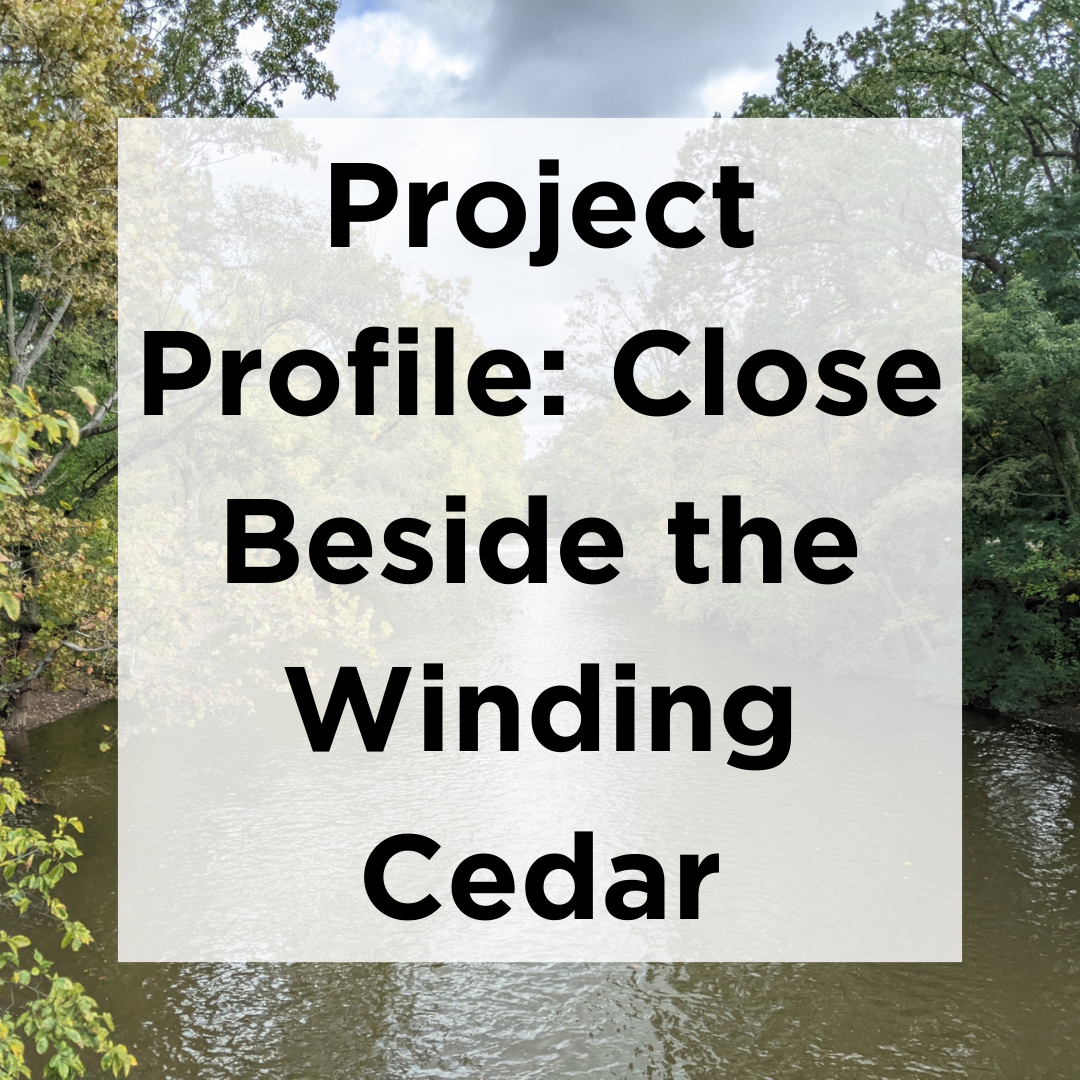Project Profile: Close Beside the Winding Cedar

Through his digital scholarship project “Close Beside the Winding Cedar,” Eric Tans, Science Coordinator and Environmental Sciences Librarian at MSU Libraries, has created a rich, multi-dimensional portrait of the river that flows through the history and campus of Michigan State University. Using ArcGIS StoryMaps, his project braids together interpretive maps, primary source materials, and narrative to investigate the complicated and at times conflicting attitudes toward the river.
Eric’s project is the culmination of a sabbatical spent research the history of the river and his participation in the 2022-2023 Digital Scholarship Lab Incubator, a yearlong opportunity to receive an introduction to digital scholarship practices and join a cohort of practitioners working on their own projects.
In this conversation, we highlight the ways the Project Incubator guided the design of his project.
Justin Wadland: When you describe your project to somebody who's never heard about it, what do you say?
Eric Tans: I describe it as an online exhibit, similar to a library exhibit, that demonstrates the history of the Red Cedar River and its relationship to MSU over time.
How did the project incubator help you with this project? Did you come in with the idea of creating this exhibit? How did it take shape?
I initially had the idea of creating an online product for my sabbatical research project on the history of the Red Cedar River. The project incubator was instrumental in helping me select the most appropriate software for my idea and providing numerous examples of other projects that used similar software or ideas. It also provided a lot of feedback on how everything should be organized and what it should look like. Additionally, I appreciated the lecture-based workshops and background information about digital scholarship, which helped me better understand the discipline.
Initially, I was stuck on how to display the mapping element of my story map and wanted to have one map that showed everything. I talked to Kate Topham [Digital Humanities Archivist in the College of Arts and Letters and lead for the Incubator last year], and she showed me a bunch of examples of other projects using StoryMaps. They all had multiple maps that were much more focused in what they were trying to show. I realized that having one big messy map was just not going to set my project up for success, so I followed the lead of the other projects and broke things out. Once that happened, then the organization of the rest of the information fell into place.
I spent some time recently reading through the whole project and looking at how you structured it. I like how it considers the river from all these different dimensions and then you have maps in that correspond to those dimensions.
Absolutely, that information would have been lost if I had tried to cram it all into one map. It would have been overwhelmed with details and elements being stuffed on top of each other.
What advice or lessons learned would you share with somebody who's working on a project like this?
I would say be open to following where the project takes you. Don’t be too prescriptive about what software to use or what it will ultimately end up looking like because that often reveals itself as you become more familiar with the tools and figure out how you want to piece it all together. The process for me was gradual. When it comes to using the tools, if it's something you've never used before, just get in there and start playing around with it and start adding stuff. The first draft of my project looked pretty different than what it ultimately ended up looking like.
Also, always revisit and revise after you have something put together. Getting someone to proofread your writing before it reaches a larger audience can be very helpful.
For more information:
